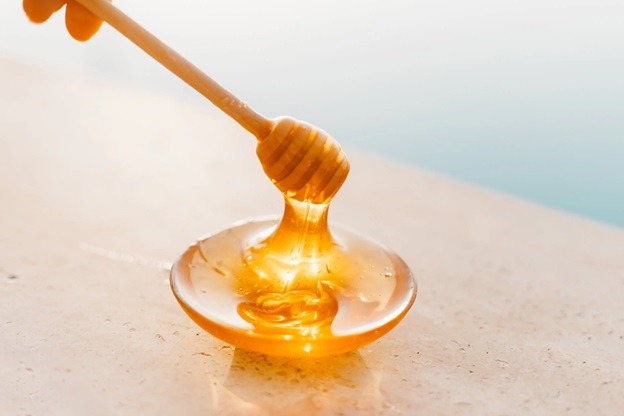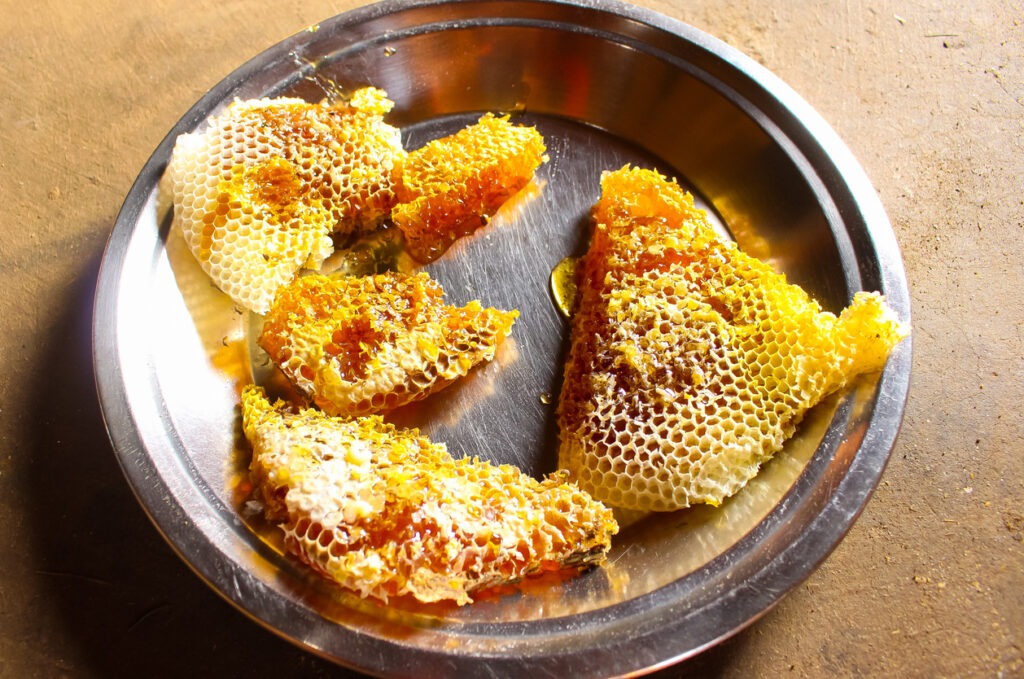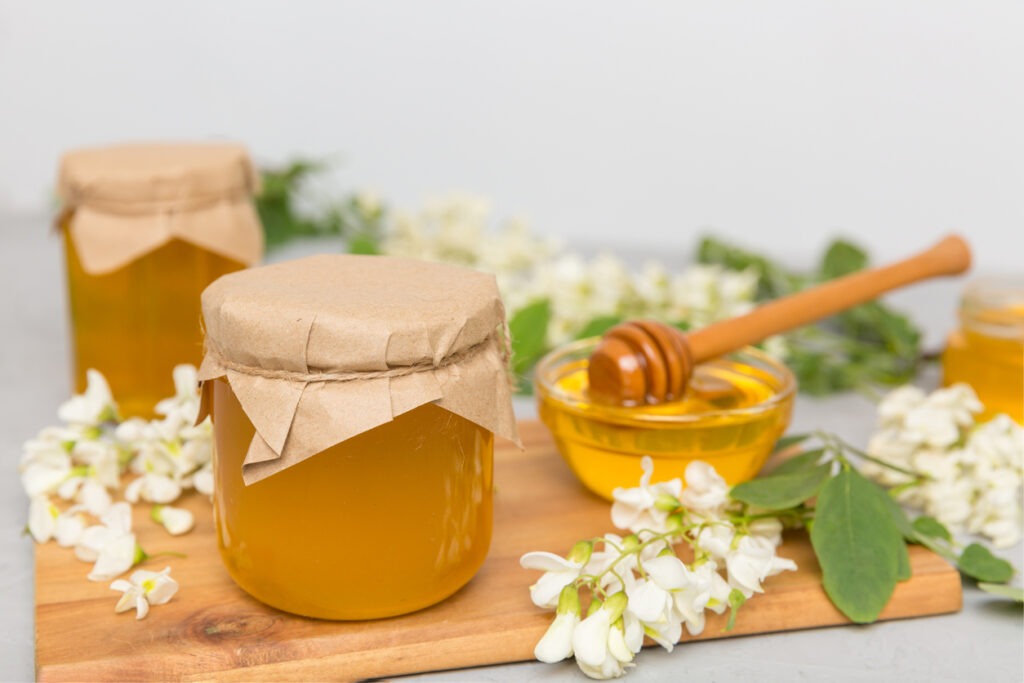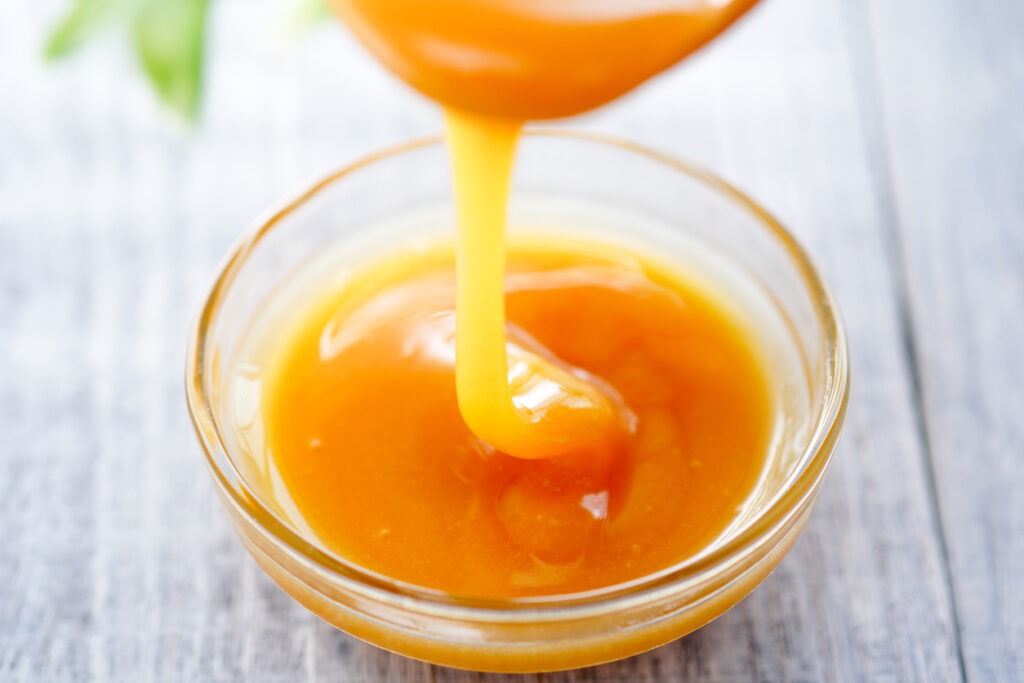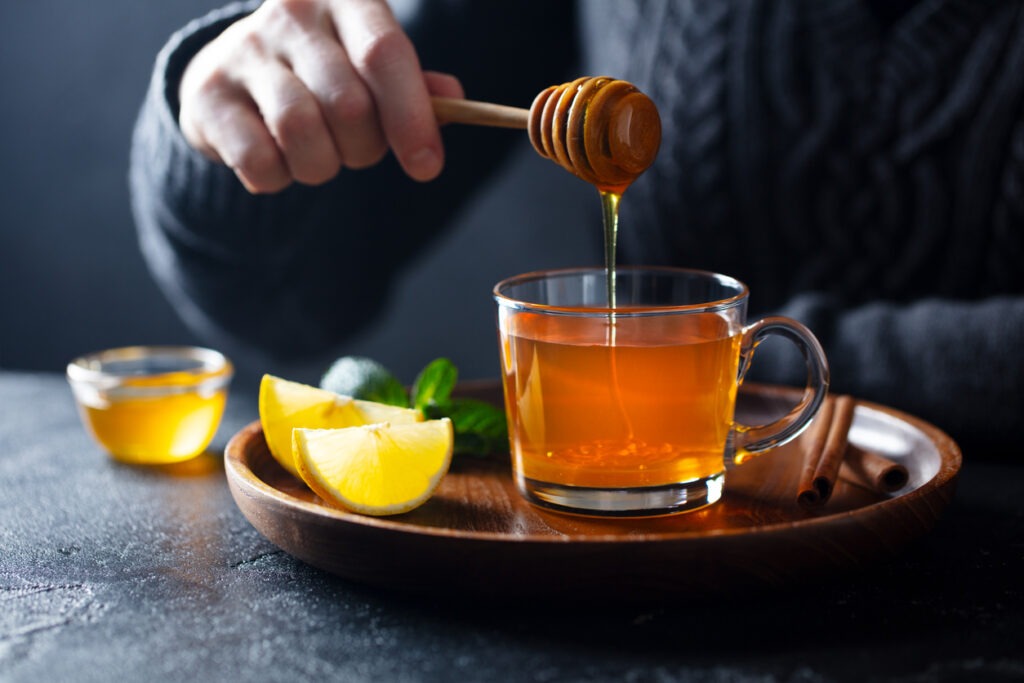Since the beginning of civilization, people have used honey to sweeten food and beverages. It has antibacterial properties that make it useful in wound treatment. Nowadays, with the rise in consumer demand for healthy foods, honey’s medicinal benefits are beginning to be studied again.
Mad honey
This type is coming from bees who gathered pollen from rhododendrons. The toxin found in rhododendron nectar is grayanotoxin, coming from the plant’s sap. It can induce hypertension (high blood pressure), irregular heart rate, and even low blood pressure, which lead to dizziness or loss of consciousness. These symptoms are usually mild at the onset but may progress to severe cardiovascular problems like a shock if not treated immediately. Although this type is not edible, it has healing properties for certain diseases.
In Turkey, beekeepers create mad honey, which is marketed in local markets and bazaars for use in alternative remedies. Mad honey is used to treat gastrointestinal diseases, hypertension, diabetes, arthritis, coronary heart disease, colds, various viral infections, and mouth sores as an alternative treatment. Grayanotoxin, on the other hand, has a direct effect on the heart and can cause abrupt death owing to hypotension. There have been reports of toxicity and even death as a result of mad honey ingestion. The toxic dose is not specified, and the severity of the poisoning varies with the quantity. Individuals who ingest fresh and raw honey are more likely to become ill. Mad honey should not be utilized in alternative treatments because the concentration of grayanotoxin is unknown.
Nepal mad honey
This particular mad honey variant is derived from the honey produced by Himalayan bees. The locals claim that Nepal mad honey has medicinal qualities with antibacterial and antifungal properties. It is used as a dietary supplement for those suffering from cardiovascular diseases such as high blood pressure, arteriosclerosis, and obesity. Also, this honey has an intoxicating and relaxing quality.
This mad honey has a sweet-smelling aroma transparent color, and sweet taste. It has a liquid texture liquid and comes with little to no adulterants or impurities. The countries of origin of this honey are Nepal and India. A popular way of consuming this honey is by blending it with cinnamon and ginger powder for a warm cup of tea. Alternatively, you can add it to your favorite salad dressing or use it in homemade peanut butter cookies.
White honey
This type of honey is made by bees that gather nectar from apple blossoms, orange blossoms, or clover fields. Its color is transparent and crystallizes easily. Since it’s been filtered, white honey doesn’t have any impurities or pollen. In some countries, this type of honey is used as a dressing for wounds because it has antiseptic properties. In addition, white honey can help with digestion problems such as gastric reflux disease (GERD).
White honey is also high in antioxidants. Flavonoids and phenolic compounds are antioxidants found in white honey. These antioxidants protect the body from free radical-caused cell damage. It also aids in cell regeneration, protects against numerous types of cancer, and the content of polyphenols aids in heart health.
Berry honey
This kind of honey comes from bees that collect nectar from different kinds of berries or fruits. Since berry honey contains a lot of antioxidants, which are beneficial to health, it is considered a healthy choice. On the other hand, since bees gather nectar from different sources like trees and plants, berry honey also contains traces of other substances like tree bark or pollen, which can trigger allergies.
Acacia honey
This type of honey is made by bees gathering nectar only from the flowers of acacia trees found in Australia and Asia. It has a unique sweet taste with a low acidic level. What makes it stand out is its chemical properties.
When water and acacia honey are mixed together, they react to create hydrogen peroxide, an antiseptic agent that kills bacteria, making it useful for wound care. This is why some people use it regularly to treat dry skin or acne on their faces.
Multi-floral honey (may also be referred to as wildflower honey)
This is the most common type of honey in North America. It’s made when nectar from many different plants is collected by worker bees and combined in the hive. Each batch of multi-floral or wildflower honey will taste slightly different depending on what blossoms the bees were feeding on when the nectar was collected. Although this type of honey often lacks a distinctive flavor profile, it retains all of its health benefits and provides an average of 64 calories per tablespoon.
Monofloral honey
This type of honey comes from a single source, such as orange blossoms, sourwood or tupelo trees. These kinds of honey are known for their lighter color and milder flavors. In general, monofloral honey contains higher levels of fructose, which makes it sweeter than other types of honey. It also tends to crystallize more quickly.
Due to the presence of phytochemicals directly associated with health benefits, wound healing, antioxidant, anticancer, and anti-inflammatory properties, monofloral honey has recently attracted interest from consumers and, in particular, the medical community.
Manuka honey
Manuka honey comes from bees that pollinate the flowers of manuka bushes in Australia and New Zealand. Only during the early morning hours will the nectar be collected by worker bees, when it’s most nutrient-rich. Its distinct sweetness is complimented with a slightly medicinal taste, which has made it popular in tea and toast in Australia and New Zealand for generations. Manuka honey has antibacterial properties similar to hydrogen peroxide, which makes it effective in killing viruses and bacteria.
Wildflower honey
This type of honey is created by bees that pollinate a variety of trees, shrubs, and grasses. While this type of honey can taste slightly different depending on the flower source, it’s generally recognized for its mild flavor and light amber color. It contains about 64 calories per tablespoon and has not been proven to provide health benefits beyond those found in all types of honey.
Honey as an energy booster
Studies have shown that natural honey before or after workouts could make your energy levels rise to enable you to work out longer without feeling fatigued; but only if consumed about 30 minutes before working out and again within an hour after working out.
Honey as an antibacterial medicine
According to National Honey Board, it has been used for centuries as a home remedy for treating burns and wounds. The antibacterial properties of honey make it effective in killing bacteria that cause ulcers, throat infections, urinary tract infections, gum disease, and cavities.
Honey as an effective remedy against allergies
As soon as you are stung by a bee or wasp, the body releases histamine, which is what causes the pain found at the sting site. Consuming natural raw honey daily helps your body produce small doses of these chemicals so your body gets accustomed to them over time, making you less likely to react to allergens.
Do you want to protect your child from developing allergies? Studies show that exposing infants to certain foods at an early age helps them develop immunity against allergies later in life. You can do this by regularly giving them natural, unprocessed honey during their first year of life.
Honey is truly one of God’s best gifts to mankind. So whenever possible, look for raw unpasteurized honey sold by local beekeepers to experience the health benefits nature intended us to have. If you haven’t added honey to your healthy foods, now is the best to do so.
Honey has more benefits than regular sugar
Honey, when compared to regular sugar, may provide some benefits in blood sugar management because it contains antioxidants that may help protect against metabolic syndrome and type 2 diabetes, and it has been shown to increase levels of adiponectin, a hormone that improves blood sugar regulation and reduces inflammation. Daily honey consumption may help improve fasting blood sugar levels in those that have type 2 diabetes, according to research. Even though honey adulteration is banned in most countries, it is nevertheless vital to consume honey in moderation and be cautious of the risk of honey being diluted with plain syrup.
Honey as an effective use for topical treatment
Topical honey treatment has been used for hundreds of years to heal wounds and burns, and a review of 26 research revealed it to be helpful for partial-thickness burns and infected wounds following surgery. It has also been demonstrated to be an effective treatment for diabetic foot ulcers, with some studies reporting a 43.3% success rate and others reporting a 97% recovery rate. Honey’s antibacterial and anti-inflammatory characteristics contribute to its healing abilities and may also be useful in treating other skin disorders like psoriasis and herpes blisters. Manuka honey is especially useful in curing burns. However, in the case of severe burns, seek immediate medical assistance.

